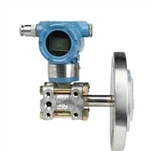What position sensors are used in hydraulic cylinders?
In the age of advanced automation and precision engineering, the magnetostrictive displacement sensor has become an indispensable component in hydraulic cylinder applications. Known for its high accuracy, robust performance, and non-contact position measurement, this sensor is widely adopted in industries where reliable and real-time position feedback is essential.
Whether it's controlling the movement of large construction machinery, monitoring hydraulic presses in a manufacturing plant, or enhancing precision in injection molding machines, magnetostrictive sensors offer a powerful solution to track the piston's position inside hydraulic cylinders with micrometer-level accuracy.
What Is a Magnetostrictive Displacement Sensor?
Magnetostrictive displacement sensors operate based on the magnetostrictive effect, a physical phenomenon where a material changes shape or produces a mechanical wave in response to a magnetic field. In these sensors, when two magnetic fields interact - one from a movable magnet attached to the cylinder piston and one from an internal wire - a strain pulse (mechanical wave) is generated. This pulse travels along the waveguide and is detected by a pickup element at a known location. The time delay between the pulse generation and detection is used to calculate the exact position of the piston.
This technology enables absolute, non-contact position sensing, making magnetostrictive sensors highly suitable for closed-loop control systems that require consistent and repeatable accuracy, even in challenging environments.

Why Use Magnetostrictive Sensors in Hydraulic Cylinders?
1. Precision and Repeatability
Magnetostrictive sensors can achieve sub-millimeter accuracy, which is essential in applications where even the smallest deviation in movement can result in poor performance, increased wear, or process inefficiencies. This level of precision is particularly important in hydraulic presses, servo-hydraulic systems, and machine tools.
2. Real-Time Position Feedback
These sensors provide continuous position monitoring, ensuring that operators or controllers can instantly know the exact location of the piston. This real-time feedback allows for more efficient and safer system operation.
3. Durability in Harsh Environments
Because magnetostrictive sensors have no moving electrical parts and are often encased in sealed, stainless steel housings, they are ideal for rugged, high-pressure, or dirty environments like those found in mobile hydraulic equipment, agricultural machines, or offshore platforms.
4. Non-Contact Measurement
Unlike potentiometers or other mechanical position sensors, magnetostrictive sensors do not suffer from wear and tear due to physical contact. This results in a longer service life and lower maintenance costs over time.
Sensor Installation Methods: Internal vs. External Mounting
Magnetostrictive sensors for hydraulic cylinders come in two main installation types: external and internal mounting. Each method has its pros and cons, and the choice depends on the design, space constraints, and operating conditions of the application.
A. External Mounting
In this configuration, the sensor is mounted outside the hydraulic cylinder, often along the cylinder body or at the lug of the piston rod. The moving magnet is typically attached to the piston or rod, allowing the sensor to track its position externally.
Pros:
Easy installation and maintenance.
No need to modify the internal structure of the cylinder.
Suitable for retrofitting older cylinders.
Cons:
Exposed to environmental damage (e.g., collisions, vibrations, debris).
Takes up more space, making it unsuitable for compact systems.
May require additional mechanical protection.
See our external Mounting position sensors
Linear Position Sensor For Hydraulic Cylinder In Profile Design
B. Internal Mounting
Internally mounted magnetostrictive sensors are embedded inside the cylinder body, protected from external damage and environmental exposure. The sensor runs along the axis of the cylinder, directly measuring the position of the piston via a built-in magnet.
Pros:
More compact and integrated design.
Fully protected from environmental hazards.
Ideal for applications where space or impact resistance is critical.
Cons:
More complex to install and requires design considerations during cylinder manufacturing.
Internal components must withstand high fluid pressure.
Repairs may be more labor-intensive.


Internal Mounting Position Sensors
Built-In Magnetostrictive Displacement Sensor For Oil Cylinder
Where Are These Sensors Used?
Magnetostrictive displacement sensors are used in a wide variety of industries that rely on hydraulic cylinders for motion and control. Common applications include:
- Construction equipment (excavators, cranes, bulldozers)
- Agricultural machinery (tractors, harvesters)
- Manufacturing automation systems
- Hydraulic presses and molds
- Aerospace testing rigs
- Energy and offshore drilling equipment
- Material handling and logistics systems
In all these sectors, the demand for accurate stroke control, safe operation, and high-performance feedback systems makes magnetostrictive sensors the go-to solution.
How to Select the Right Magnetostrictive Sensor
Choosing the right sensor for a hydraulic cylinder involves evaluating several technical factors:
1. Measurement Range
Determine the maximum stroke length your hydraulic cylinder requires. Sensors are available in lengths ranging from a few centimeters to several meters.
2. Output Signal Type
Depending on your system's requirements, you can choose between different output formats:
Analog (0-10V, 4-20mA)
Digital (SSI, Start/Stop)
Fieldbus (CANopen, Profibus, EtherCAT)
3. Resolution and Linearity
For high-precision applications, check the sensor's resolution (smallest detectable movement) and linearity (accuracy across the full stroke).
4. Mounting Type
Decide between internal and external mounting based on space, protection needs, and system complexity.
5. Environmental Protection
Ensure the sensor has a suitable IP rating (e.g., IP67 or IP68) if it will be exposed to dust, water, or chemicals.
Future Trends and Innovations
As industries increasingly adopt Industry 4.0 and IoT-enabled systems, magnetostrictive sensors are evolving to include self-diagnostics, remote monitoring, and predictive maintenance features. Some models now offer:
Real-time temperature and error monitoring
Onboard memory for stroke history
Smart integration with cloud platforms
These innovations not only improve reliability but also reduce downtime and total cost of ownership.
Conclusion
Magnetostrictive displacement sensors offer unmatched accuracy, reliability, and robustness for hydraulic cylinder applications. Whether installed internally or externally, they provide precise piston position feedback, essential for automation, motion control, and safe operation.
Their non-contact, absolute position measurement capability makes them the preferred choice across industries - from construction and agriculture to aerospace and manufacturing. As technology continues to advance, magnetostrictive sensors are set to play an even more critical role in the future of intelligent hydraulic systems.










